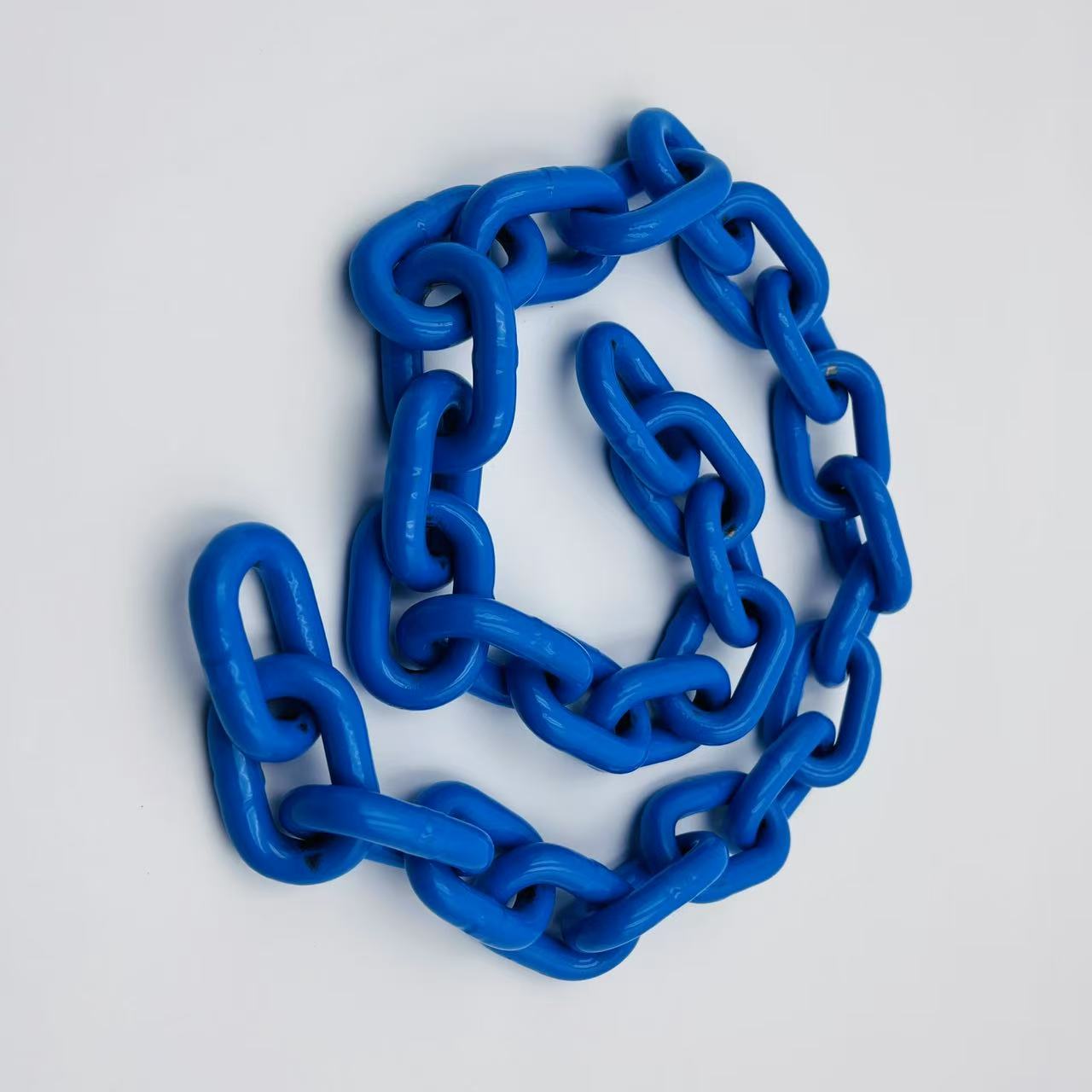Our staff will contact you within 12 hours, You can also contact us through the following ways:
Contact US WhatsApp: +86 18263873187
- Email: [email protected]
- Tel: +86 18263873187
- Web: www.lifting-chain.com
In material handling and heavy-duty rigging, two terms are frequently used side by side—lifting chain and chain sling. Although closely related, they perform different roles in a lifting system. A lifting chain is the fundamental load-bearing component made of alloy steel, while a chain sling is a complete lifting assembly built from that chain, equipped with hooks, master links, and fittings for practical use on cranes and hoists.
Understanding the difference between the two is crucial when specifying lifting equipment for construction, shipyards, mining operations, or industrial rigging. This guide provides a detailed comparison and explains how TOPONE CHAIN® manufactures both lifting chains and assembled chain slings for global customers.
A lifting chain is a specially engineered chain designed for hoisting and load-bearing. Unlike ordinary industrial chain, it is manufactured from quenched and tempered alloy steel, typically Grade 80 (G80) or Grade 100 (G100), and must comply with strict international safety standards such as EN 818, ISO 3077, ASTM, or NACM.
Key Characteristics of Lifting Chain:
High tensile strength and fatigue resistance
Safe to use under shock loading
Works in harsh outdoor or industrial environments
Operates in high-temperature conditions where synthetic slings fail
Manufactured in various diameters to support different Working Load Limits (WLL)

A chain sling is a fully assembled lifting tool made from lifting chain and rigging components. It includes:
A master link (top connection to crane or hook)
One or more chain legs (made from lifting chain)
End fittings such as grab hooks, self-locking hooks, or foundry hooks
A lifting chain becomes a chain sling only after assembly, testing, certification, and marking. This is the tool that is actually used by riggers on-site.
Aspect | Lifting Chain | Chain Sling |
Definition | Raw material for lifting | Finished, ready-to-use assembly |
Components | Chain only | Chain + master link + hook(s) |
Function | Provides strength | Provides connection & versatility |
Usage | For manufacturing/assembly | For actual lifting operations |
Customization | Diameter & grade | Number of legs + fittings |
The lifting chain provides the core strength, but cannot be attached directly to a crane or load without fittings. The chain sling solves this by integrating secure connection points and safety hardware.
This is why procurement departments often source both from the same manufacturer—to ensure compatibility, traceability, and certification continuity.
Chain slings can be configured based on the number of legs:
Sling Type | Typical Use Case | Advantages |
Single-leg sling | Vertical lifting, hook point loads | Simple, economical |
Two-leg sling | Balanced loads with two lifting points | Good stability |
Three-leg sling | Irregular load distribution | Adapts to complex shapes |
Four-leg sling | Large or heavy cargo requiring high stability | Maximum safety & load control |
When choosing between a lifting chain and a chain sling, consider:
Load Capacity Requirements
Higher WLL → G100 recommended
General lifting → G80 suitable
Working Environment
Marine / corrosion: galvanized or stainless
High-temperature: alloy steel (chain slings outperform nylon)
Load Shape & Balance
Simple, vertical lifts → single-leg
Wide or multi-point lifts → multi-leg chain sling
Maintenance & Inspection
Chains must be checked for wear, elongation, and deformation
Hooks and master links should match the chain grade
TOPONE CHAIN® is one of the few manufacturers that supplies both the raw lifting chain and the finished chain sling. This ensures:
Full traceability from steel billet to finished sling
Consistent mechanical properties across all components
TÜV / CE / ISO9001 certified production
Faster delivery and more competitive pricing
Custom assembly options for international distributors
With nine automated production lines and strict heat treatment controls, TOPONE CHAIN® delivers stable product quality for heavy lifting across construction, shipyards, logistics terminals, and mining operations.
A lifting chain provides the structural strength required for heavy loads, while a chain sling is the full lifting solution ready for real-world rigging. One is the foundation, the other is the application. To ensure maximum safety and performance, they must be sourced from a certified, technically capable manufacturer such as TOPONE CHAIN®.
If you need reliable, industrial-grade lifting chains or fully assembled chain slings, TOPONE CHAIN® offers a complete product portfolio, manufacturing excellence, and global supply capability.